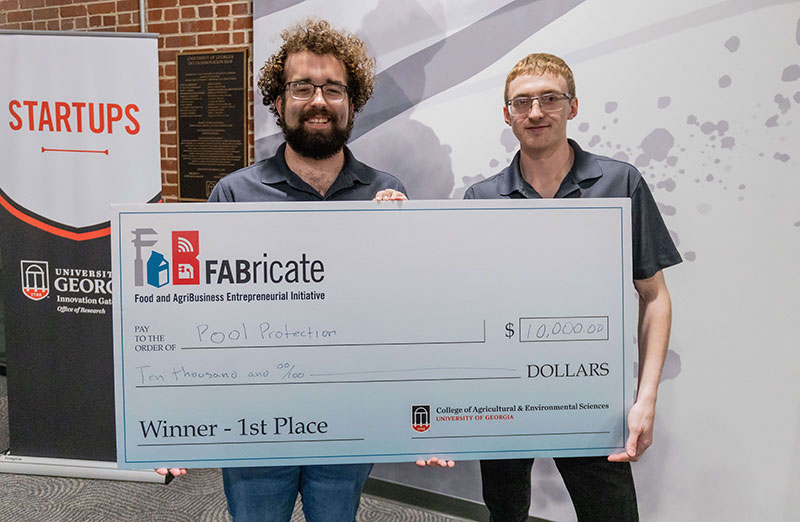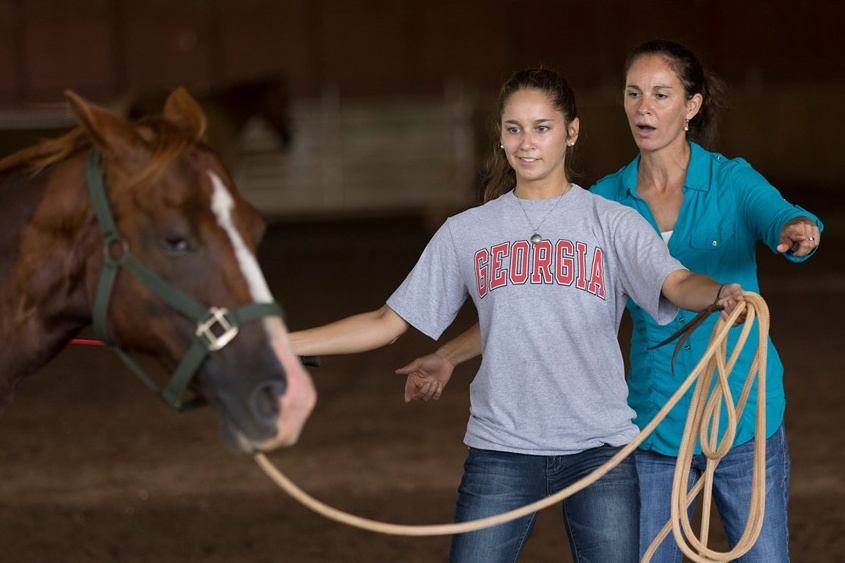Poor hay quality due to last year’s increased rainfall, has Georgia cattle farmers searching for alternative ways to supplement the hay they feed their herd.
Jacob Segers, beef cattle specialist with University of Georgia Extension, recommends planting winter annuals such as annual rye grass, wheat or different cover crops for cows to graze during the winter. Other feed sources high in digestible fiber, including soybean hulls, , corn gluten feed, citrus pulp and silage, are also suggested.
Many county Extension agents, as well as cattle farmers, are asking Segers dietary questions because a normal food source is not meeting nutritional needs this year.
More rain in 2013 resulted in hay maturing more rapidly. Because of inclement weather and wet conditions, most hay remained in fields until the skies cleared and the hay could be cut. As a result, the digestibility of the hay was low compared to that harvested in years with moderate rainfall. Also, left in the field and rained on, the hay lost a lot of nutrients essential for cattle’s growth.
“It’s not abnormal (to have poor hay quality) in a wet year but we haven’t had a wet year in Georgia in a long time. We’ve had several years of drought where our issue was actually being able to get enough hay cut. The quality of the hay usually wasn’t an issue,” said Segers, who is based on the UGA campus in Tifton.
In the past, storing enough hay for the winter was the problem most farmers faced. This year there is an abundance of hay, but the quality may not be sufficient to meet the animals’ needs, Segers said.
Hay can lose approximately 20 percent of its energy value and 40 percent of its protein every ten days it has to stay in the field after the optimal cutting date, he said. “That leaves cattlemen in a situation where the hay is probably not going to meet the nutritional requirements of at least certain segments of a cowherd,” Segers said.
Insuring cattle are properly nourished is a top priority for cattlemen, whose business thrives on cattle’s good health. Segers says if cows aren’t receiving necessary levels of nutrients, their chances of conception are reduced. If farmers don’t have a calf on the ground every 365 days, they lose money.
“Physiologically speaking, the first thing a cow is going to sacrifice is reproduction (if not receiving enough nutrients). Then her milk production will decline. Then, if you are dealing with heifers, you’ll see them stop growing,” Segers said.
When a cow consumes nutrients, her first objective is to maintain her own health; keep the heart beating and lungs expanding. Then if a cow has a calf, nutrients are used for lactation. Many nutritional hurdles have to be cleared so a cow is healthy enough for reproduction.
“Our No. 1 priority is No. 4 on her list,” Segers said.
If the animal is a heifer that is still growing, the nutrients go toward growth until the animal reaches maturity.
Segers says it’s important for cattle farmers to know that not all cows require the same amount of nutrients. A non-lactating, pregnant cow requires much less nutrition than a cow that has just had a calf and is starting to lactate.
It’s also important for cattlemen to get their hay tested. Some low-quality hay might suffice for cows with low nutrient requirements, he said.
Segers also recommends farmers avoid high starch feeds to decrease metabolic disorders and increase efficiency in the cow herd.
For more information on feeding hay to cattle, see the UGA Extension publications at caes.uga.








